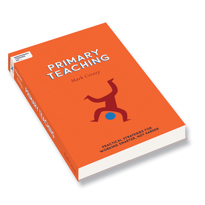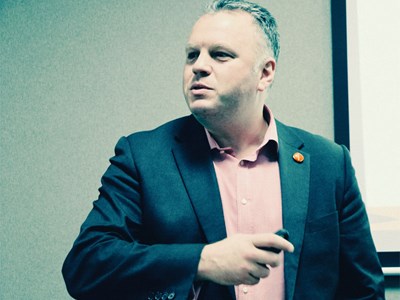Increase Learner Engagement by Involving
Children in Your Planning
Associate and author of Independent Thinking on Primary Teaching, Mark Creasy, on the power of the KWL grid
An interesting thing happened on Twitter the other day – a genuine conversation took place with a focus on primary teaching and learning.
It was like the old days.
The focus was involving children in lesson planning and for me, the question is never ‘if’ but ‘how’.
I shared an idea I have used in the foundation subjects of Geography, Science and RE, but also in in English and Science so it works in the real world. I’ve also used it when I was teaching secondary at the start of my career.
See what you think.
New Starts
At the start of a new piece of learning, for a term or a half-term, my class would complete a ‘KWL Grid’ (it can also be presented in columns):
K – What I Know.
W – What I Want to learn.
L – What I have Learned.
You then work to incorporate KWL Grid in your immediate, short-term, medium-term and long-term planning, as follows:
Immediate
K
The first priority is to check the ‘What I know’ section. This can be a real source of entertainment. Over time, when these have been used continually, the children will gain the confidence to leave this empty or only put in things they are certain about. However, initially at least, checking facts such as ‘What number is Henry?’ and ‘How many wives did he have?’ is vital.
Clearly corrections will need to be done sensitively. Questions such as, ‘Where did you hear that?’ and ‘Are you sure about that?’ or ‘What makes you so certain?’ all help. It is also worth being prepared to make a list of things you’re not sure about (I have in the past included some I did know) to demonstrate to the learners that you’re prepared to check things and that you’re not the font of all knowledge – a bit of humility goes a long way.
W
This is the important element in this grid, as this can be used to shape the scheme of work. Yes, you may have considered how to fill the next six to twelve weeks of learning in the subject, but I have found the following to be true:
- It is rare for the children to go too far off-piste. They tend to consider most things you want to explore anyway
- Their suggestions can enhance your planning, or even provide the opportunity for independent learning, where the children research and then present their own findings
- Even within the National Curriculum, you can accommodate what the children suggest in the learning
- It tends to be teacher ego that gets in the way of doing this
- Their perspective is important for them. How do they see themselves in their learning? Consider this to help you shape your future teaching.
This final point was perfectly exemplified a few years ago to me when one of my children (Year 6) put in their 'W' box:
‘What happened to all the black people in England by Tudor times?’
When we explored this, he pointed out that in Year 4 he’d learned about how black people came to England as part of the Roman Invasion, but he’d never seen a black person in any pictures of The Tudors – or other peoples of Britain for that matter.
As a result of this I was determined to include such elements in the curriculum.
We learned of John Blanke (musician), Jacques Francis (salvage diver) and Diego (sailor), as well as that in Tudor England (though not on the Continent) black people were not slaves.
We also considered attitudes to black people through Shakespeare’s portrayal of Othello, ‘The Moor’.
Obviously, not everything will have such resonance, but for the children I have taught who wanted to explore fashion or football, meals or medicines and countless other themes, their input has helped me hone the topic and shape their understanding of how their areas of interest developed throughout history/culture/countries/religions.
L
This is the easiest one initially as the children won’t have anything filled in – although, they may have learned from their classmates throughout the lesson, so could add to this section at the end.
Short-term
This is where you need to adapt and refine your planning.
My advice here would be to ensure that you have sketched out an overview of the learning with your year group partner(s) – if you have them – and then agree what you will be delivering.
Clearly this will be easier if you have an entire term to be able to deliver the learning, but even with half a term, at least one lesson can be set aside.
To achieve this, you should consider:
- What does the National Curriculum actually say?
A classic example here is UKS2 Science: Earth and Space. If you look at the statutory requirements the planets are not mentioned. They are in the non-statutory element but only insofar as knowing the solar system has eight planets and Earth is one of them. Clearly, there’s scope and time to play with here.
- What is your learning outcome?
Ideally the learning in Geography, History, RE and Science should support the reading and writing curriculum, allowing the children to experience a wider range of literature and to be able to present writing in a variety of genres with a specific purpose.
That is not to say that all learning should result in writing but considering how the children will reflect their learning and what to include will be important.
- Can ideas be grouped?
For my learner who wanted to know about black people in Tudor times, this was incorporated into the planned learning of ‘Famous Tudors’ – it was just rebadged as ‘Non-Royal Tudors’ which then allowed an exploration of why it was only the wealthy had portraits.
This, in turn, led to a consideration of how everyone creates and shares pictures nowadays.
- If they really want to learn it, find time for them to present it.
Having written and presented extensively about completing homework differently (see Unhomework) this is an ideal opportunity for the children to conduct their own learning and then bring it back into the classroom.
My only caveat is do not always do this, as the children will soon feel dismissed and get the impression their ideas are inconsequential.
- Can you magpie from your year group partner(s)?
What did their class come up with? Would your class benefit from this as well? Don’t be afraid to have at least some content/lessons that are individual to your class, it should reflect their learning.
The school website will reflect the overview of learning that all children will undertake but independence and nuance should be encouraged and developed.
Unless you don’t want engaged independent learners.
Medium Term
This is where the teaching takes place and so the input from the children should have an impact here. Be prepared to signpost what you are coming to and share whose questions/ideas/input you are leaning on for your planning.
As the learning goes on the children will review their KWL grid, ideally weekly.
I prefer to do this at the start of each lesson as it reminds the children of last lesson’s learning, as well as prompting any relevant questions for today’s lesson.
It is here that the children will, overtime, add to their ‘L’ section of the KWL grid.
However, I have worked with colleagues who have used the KWL grid completion as a lesson review at the end of the learning, or even as a learning break in the middle of the lesson, so you can make your own choice too.
When you reflect on the lesson, especially when it is derived from a child’s input, be prepared to add a note or two about the learning and thoughts for the future.
Long Term
If you have a forward thinking Headteacher, you will spend at least two, if not three years in the same year group to be able to hone your understanding and craft with that curriculum.
Therefore, next time you come to plan the learning for this topic, consider what you included from the children and exactly what you want to include for this series of planning.
I’ve always found it useful to provide a general overview for the learners and to highlight what I have introduced from last year’s cohort and inform the children that they will similarly get to impact their own learning.
This means that, for a 12-week scheme of work, I tend to have at least two weeks ‘spare’ for the children to guide the direction of the learning.
In doing this, you can avoid the fate of teaching the same thing, in the same way, at the same time every year, which is not only responsive and respectful to the learners, but also makes the learning delivery more enjoyable and varied for you – albeit meaning that you may have to control some of your natural ‘control freakery' urges!

Let me know how you get on and if you want loads more practical, workable ideas like this, do check out my book Independent Thinking on Primary Teaching. [ITL]

Mark Creasy
To find out more about booking Mark Creasy for your school, college or organisation call us on 01267 211432 or drop us an email on learn@independentthinking.co.uk.
Enjoy a free no-obligation chat.
Make a booking. Haggle a bit.
Call us on +44 (0)1267 211432 or drop us a line at learn@independentthinking.co.uk.

About the author
Mark Creasy
Mark Creasy is a former primary and special school teacher who also has experience in secondary - a rare breed. He is the author of Unhomework and Independent Thinking on Primary Teaching and is always full of ideas to help teachers save time and energy as they really stretch their children.